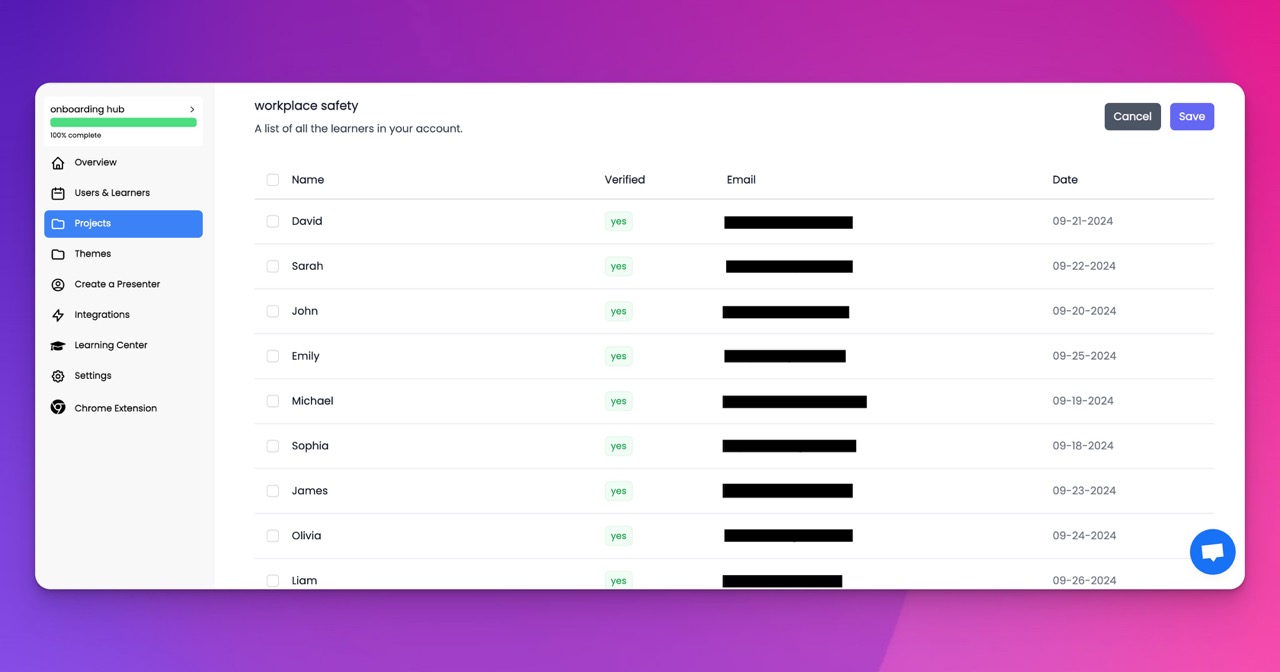🎉 Trainday now integrates with Zendesk and Hubspot 🎉 Trainday now integrates with Zendesk and Hubspot 🎉 Trainday now integrates with Zendesk and Hubspot
🎉 Trainday now integrates with Zendesk and Hubspot
🎉 Trainday now integrates with Zendesk and Hubspot
Contact
OSHA Compliance
"Unlocking The Role: A Comprehensive Guide To Becoming An OSHA Compliance Officer"
# Unlocking the Role: A Comprehensive Guide to Becoming an OSHA Compliance Officer
## Introduction
In today's fast-paced and ever-evolving work environment, the importance of workplace safety cannot be overstated. Ensuring that workplaces adhere to safety standards is not only crucial for the well-being of employees but also for the overall productivity and efficiency of an organization. This is where the role of an OSHA Compliance Officer comes into play. In this comprehensive guide, we will delve into what it takes to become an OSHA Compliance Officer, the responsibilities associated with the role, the necessary qualifications, and the potential career paths.
## What is OSHA?
Before we explore the role of an OSHA Compliance Officer, it's essential to understand what OSHA is. The Occupational Safety and Health Administration (OSHA) is a federal agency of the United States Department of Labor. Established under the Occupational Safety and Health Act of 1970, OSHA's mission is to ensure safe and healthful working conditions by setting and enforcing standards and by providing training, outreach, education, and assistance.
## Who is an OSHA Compliance Officer?
An OSHA Compliance Officer is a professional responsible for inspecting workplaces to ensure they comply with OSHA standards. Their primary goal is to prevent work-related injuries, illnesses, and fatalities by identifying potential hazards and enforcing regulations. Compliance Officers play a critical role in safeguarding workers' health and safety across various industries, from construction and manufacturing to healthcare and beyond.
## Key Responsibilities
The role of an OSHA Compliance Officer is multifaceted and involves several key responsibilities:
1. **Conducting Inspections**: Regularly visiting workplaces to inspect equipment, facilities, and practices for compliance with OSHA regulations.
2. **Identifying Hazards**: Recognizing potential safety and health hazards and determining the extent of risks.
3. **Enforcing Standards**: Ensuring that employers adhere to OSHA standards and regulations, and taking appropriate enforcement actions when violations are found.
4. **Providing Guidance**: Offering advice and guidance to employers and employees on how to improve workplace safety.
5. **Investigating Incidents**: Conducting investigations into workplace accidents, injuries, or complaints to determine causes and prevent recurrence.
6. **Documentation and Reporting**: Maintaining detailed records of inspections, findings, and corrective actions taken, and preparing reports.
## Qualifications and Skills
To become an OSHA Compliance Officer, you typically need a combination of education, experience, and skills:
1. **Educational Background**: A bachelor's degree in occupational health and safety, industrial hygiene, environmental science, or a related field is often required. Advanced degrees or certifications in safety management can be advantageous.
2. **Experience**: Practical experience in safety and health, particularly in roles related to compliance or inspections, is highly valuable. Internships or entry-level positions in safety departments can provide relevant experience.
3. **Certifications**: Obtaining certifications such as the Certified Safety Professional (CSP) or Occupational Health and Safety Technologist (OHST) can enhance your qualifications.
4. **Knowledge of OSHA Standards**: A thorough understanding of OSHA regulations and standards is essential. Familiarity with industry-specific standards is also beneficial.
5. **Analytical Skills**: The ability to analyze complex situations, identify hazards, and develop effective solutions is crucial.
6. **Communication Skills**: Strong written and verbal communication skills are necessary to effectively convey findings, provide guidance, and prepare reports.
7. **Detail-Oriented**: Attention to detail is important for accurately assessing conditions and ensuring compliance.
8. **Interpersonal Skills**: Building positive relationships with employers, employees, and other stakeholders is key to promoting a culture of safety.
## Steps to Becoming an OSHA Compliance Officer
1. **Educational Pursuit**: Start by obtaining a relevant bachelor's degree. Courses in occupational safety, industrial hygiene, environmental science, and public health can provide a solid foundation.
2. **Gain Experience**: Look for internships or entry-level positions that offer hands-on experience in safety and health roles. Networking with professionals in the field can also open doors to opportunities.
3. **Certifications**: Consider pursuing certifications like CSP or OHST to demonstrate your expertise and commitment to the field.
4. **Apply for Positions**: Once you have the necessary education and experience, start applying for OSHA Compliance Officer positions. Federal and state job boards, as well as safety and health organizations, can be good places to look for openings.
5. **Continuous Learning**: Stay updated on the latest OSHA regulations, industry trends, and best practices through continuing education and professional development.
## Career Path and Advancement
A career as an OSHA Compliance Officer can lead to various opportunities for advancement. With experience, you may move into senior or supervisory roles, such as Senior Compliance Officer or Area Director. Some professionals transition into roles in corporate safety management, consulting, or academia, where they can apply their expertise in broader contexts.
## Conclusion
Becoming an OSHA Compliance Officer is a rewarding career choice for individuals passionate about ensuring workplace safety and health. By following the outlined steps and continuously honing your skills, you can play a vital role in protecting workers and contributing to safer work environments. If you're ready to make a difference, start your journey toward becoming an OSHA Compliance Officer today.
Accelerate Compliance.
Deliver OSHA-Ready Courses Instantly.
Empower your team with data-driven training solutions tailored to your industry's safety standards. Stay compliant, reduce risks, and boost productivity with AI-powered course creation.
